Our Cork 2040: "Cork could be a wonderful garden."
Trees Please is an environmental action group that grows and plants trees. Co-founder Tom Jordan outlines a future where native woodland management in city and county benefits all our lives.
Welcome to the third installation of Our Cork 2040.
Cork city is set to double in size by 2040 under the government’s Project Ireland 2040 plans, with huge impacts not only on city-dwellers but on the whole county.
With these ambitious plans comes lots of talk of “stakeholders.” This often seems to mean private developers, multinational employers and politicians. But who really holds a stake in the future of Cork? We believe it’s the people who live, work, raise families and face all of life’s challenges here.
What kind of Cork do YOU want to live in?
Our Cork 2040 presents a variety of writers with different areas of expertise, experience and interest. These opinion pieces will remain free to read and won’t be subscriber-only: we want to spark conversation.
Our Cork 2040 is an opinion-based series. Tripe+Drisheen doesn’t necessarily share these opinions, but we do feel they should be heard. If you would like to become a contributing writer in this series, drop us a line! Our contact details are here. If you like what you read and want to support quality, independent local journalism, subscribe below.
Our Cork 2040: Tom Jordan
Tom Jordan, co-founder of Cork environmental organisation Trees Please, studied history in UCC and worked many jobs while living in Cork city for 18 years. A self-taught musician, he plays with Cork folk ensemble Blind Poets and eagerly anticipates the return of live gigs. In the meantime, you may find him in the woodshed, learning about bees or tending his garden and tree nursery near Dunmanway.
Cork by 2040: bringing native woodlands back to city and county
By 2040, Cork could be a wonderful garden with masses of flowers all year round and plentiful fruit and nuts each Autumn.
Picture this: the Mardyke Park, returned to its former glory, begins once again at the Granary Theatre and stretches all the way along the river to Carrigrohane and the Lee Fields. The Lower Glanmire Road and MacCurtain Street merge their beautiful architectural merits with meandering paths, hanging branches and dappled light, green spaces for children and slow-flowing, single-lane traffic for necessary journeys to and from the city centre.
Self-sustaining supplies of timber will feed arts and crafts workshops whose output beautifies the avenues and vistas, while providing jobs and useful items for Ireland's booming smallholder industries.
Cycle-ways and footpaths, along with a network of trams, will provide access to deep woods in the old estates on the city's outskirts, while the traffic woes of today will have all been alleviated by making car journeys into the city centre, for the most part, unnecessary.
Not Utopia, but necessity
This is not a far-fetched vision, but a necessary adaptation which will enhance quality of life for Cork's residents, boost biodiversity and help in the mitigation of climate change. Trees Please will hopefully have played a small part in all of this, but any success of such organisations can be best attributed to widespread acknowledgement of the necessity of responding to the greatest challenges of our time.
Beginnings of Trees Please
Artist and performer Tom Campbell was finishing a tour of Europe in the summer of 2018 when he wrote to friends expressing a simple desire: “I want to plant a lot of trees this Winter.” He was worried about Climate Change and biodiversity loss, but rather than sign another petition or give money to another NGO, he was keen to actually do something about it. I was a recipient of that email, and I thought it was a great opportunity to put in train a similar yearning of my own.
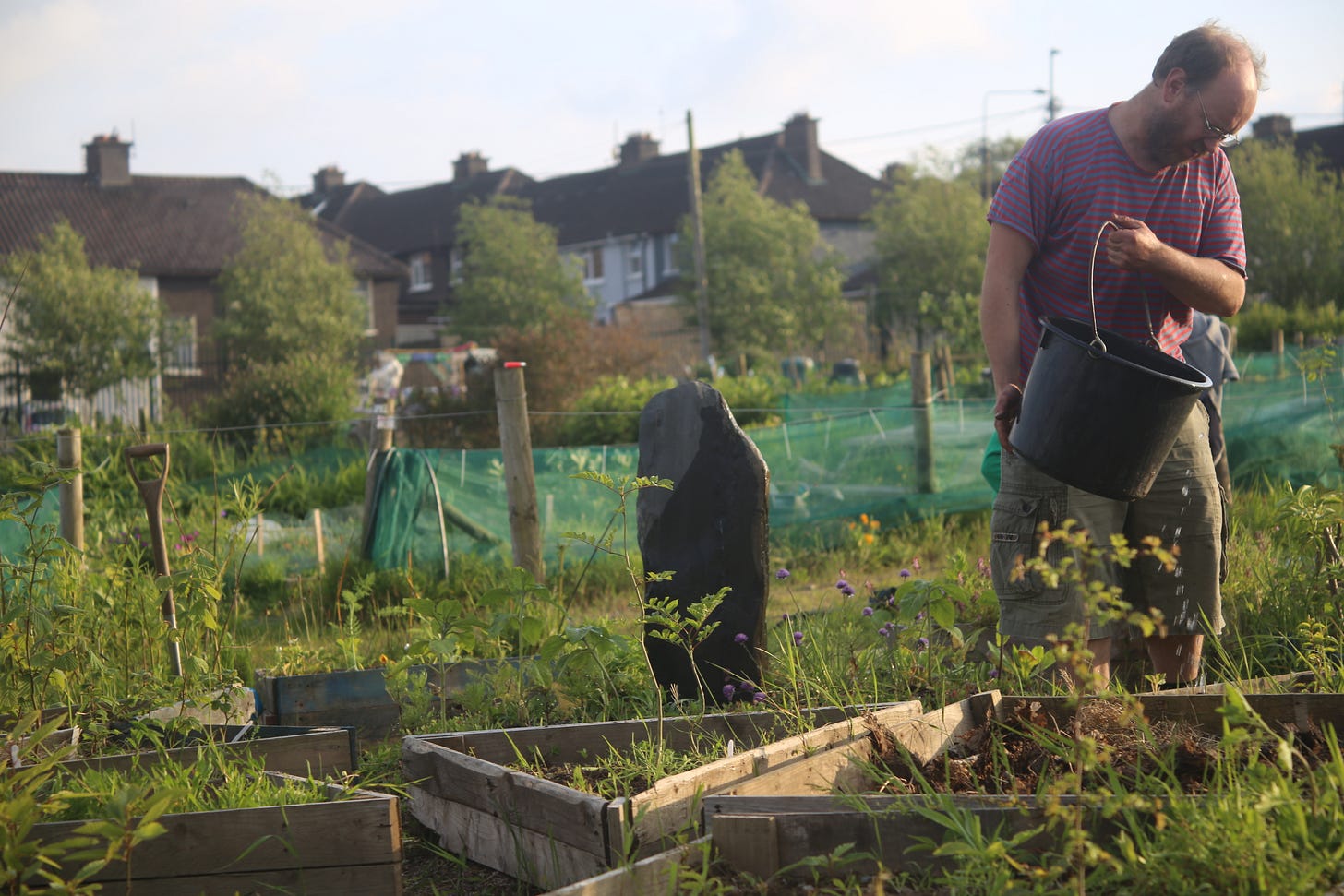
Another artist friend called Mark Redden got me started planting trees in 2003. Aside from painting pictures, Mark is well known for building curraghs and making sculptures using natural materials. As he was always foraging in woods and hedgerows for hazel or willow poles and anything else he could use, one day he arrived home with a bucket full of acorns. These he planted. Suddenly a new world opened to me. I had been interested in trees but I knew almost nothing about them. In that moment, realising how simple the process of planting them was, I became hooked.
Later I joined Mark to gather my own haul of acorns, most of which are now sizeable trees. I am still amazed every time I see one of these originals. Some of them are producing acorns of their own, which makes me feel like a grandad.
Since 2003, I've grown various numbers of trees every year. I come from a farming background and I remember wanting to plant a wood along the edge of a tillage field one year. I dug up all my best trees and it took me a week to get them out of the ground. Over one hundred well-established trees formed a single row along one length of one field. I suddenly realised that the scale I was working to was much too small to create sizeable woodlands. At the time it was quite demoralising. But the desire did not die.
I realised that one person can only work to scale. I planted a lot of trees over a decade and a half and looking at the farm, it was beginning to become more sheltered and ecologically diverse.
There is an eligibility rule both farmers and environmentalists have been fighting against for years: at present, the Department of Agriculture Food and Marine (DAFM) continues to punish farmers for having wild areas on their farms. Wide hedgerows, woods, bogs, rocky outcrops, marshes, ponds and other such areas are considered to be “non-productive” and therefore are often deducted if they grow in size or appear on satellite images of the farm taken each year.
New hedgerows and small copses were deducted from my father's farm-support payments, but he didn't complain too loudly.
It's a nonsense in this age of climate catastrophe, but DAFM is unwilling to change the rule as it fears rewilding initiatives, which are considered by some people to be anti-farming. Of course they are not, but that is an argument for another day.
When Tom sent that email, outlining his desire to plant a lot of trees, the idea resonated with me. Trees can be bought in a nursery and planted straight out. The initial proposal was to fund-raise money and use it to plant trees. But along with others on the email list, like James McBarron and Helena Breathnach, we realised it was not as simple as it sounded.
Imported saplings: the crash of the ash
There is a deadly fungus called Chalara in Ireland now, which affects ash trees and has spread like wildfire across the country. It came from the massive, intensive nurseries on the continent that are used to supply forestry plantations.
Although ash is easy to grow, no nursery in this country was growing it on a large enough scale when, in the late 1990s, the GAA announced an ambitious plan to grow enough ash to supply all its hurley needs into the future. The idea was laudable but the result was disastrous.
Imported saplings from the Netherlands brought Chalara with them, and we are currently resigned to losing around 90% of the country's ash trees. It's a landscape-wide cataclysm that will gradually unfold over the next few decades.
Trees Please did not want to inadvertently spread another disease among our cherished trees. We wanted to do the best we could, and we soon agreed that a lot of people starting small nurseries, growing local seeds and rejuvenating the local environment would be the best solution. And that is how our environmental action group, Trees Please, came to be.
Trees Please Objectives
Our role is to facilitate people who want to plant trees. We are not ourselves experts, but we have organised woodland walks and foraging expeditions with native woodland specialists, including heritage officer Ted Cook, who cares for many of Munster's ancient trees including the Muskerry Oak and has also fostered many young forests around Macroom. Ecologist Daniel Buckley gave us a terrific tour of Currabinny woods near Carrigaline during the easing of Covid restrictions last summer, while Mike Collard, who founded Future Forests nursery in Kealkill, brought a group of Trees Please enthusiasts on a terrific tour just before Covid struck in January 2020.
By providing this point of contact Trees Please has become a touchstone for many people who wanted to grow trees but didn't know how. We encourage all types of tree planting, from windowsill nurseries to larger-scale planting.
1,500 trees in 2020
Last year we distributed around 1500 trees, some of which we had grown ourselves but most of which we sourced from commercial nurseries like CELT, who use Irish seed and show similar objectives to ourselves.
The bigger picture
As interest in and demand for tree planting grows throughout the country, and indeed the world, it is very important that trees chosen for planting are ecologically suited to their location. The principle of locally grown seed is as important in Brazil as it is in Borneo. From the perspective of bio-security and biodiversity, the best model for large-scale reforestation is probably to begin by doing nothing, allowing natural regeneration to take place from the soil's own seed bank.
Not all areas will naturally revert to woodland. The presence of certain species could delay the process; bracken will prevent saplings from establishing for example, so this must be managed. Intervention can be tailored to the specific needs of a given place. After careful observation over a number of years, missing species can be planted in.
The best trees for an area depend on soil type, climate and other local conditions. There is no easy formula that can be used, unfortunately, which makes it more complicated than delivering sound-bytes often expected by politicians and news outlets. Nevertheless, the simple message of “Trees, Please” is clear enough to begin with.
Commercial forestry – we need a better model of tree-planting.
At 11%, the Irish state has one of the lowest levels of forest cover in Europe and has committed to increase this percentage to 18%. Unfortunately, most of this afforestation is currently non-native commercial forestry, which is intensively managed using pesticides for disease and weed control, then clear-felled at harvest time, usually after about 40 years. This releases nutrients into local waterways causing eutrophication and causes soil erosion, thereby nullifying much of the carbon sequestration the trees themselves are credited with achieving.
Sitka Spruce is the most common and profitable forestry tree grown in Ireland. Commercial plantations are still counted as carbon sinks, even though many of them were planted on bog and heath lands that are totally unsuited and would actually act as carbon sinks if left undisturbed.
Like a lot of financially successful industries when threatened by environmental concerns, Irish forestry interests, led by semi-state body Coillte, have resisted pressure to diversify their plantations and change from monoculture (single-species) plantations to mixed, continuous-cover models. As a result, local area advocacy groups like Save Leitrim, Save Kerry and Save Cavan to name a few, have begun lobbying hard for these changes.
In a case before the European Court of Justice in 2018, Ireland was found to be in breach of environmental assessment regulations with regard to new forestry plantations, many of which should have been surveyed for ecological impacts before being granted licences.
When the court ruling came down, forestry reformists began making formal objections to forestry licences, leading to a crippling halt in Irish timber harvests and afforestation licences. Government reacted with the 2020 Forestry Act which effectively muzzles objectors, as opposed to reforming the negative ecological aspects of the industry.
Promises of a new model for Irish forestry have been made by Junior Minister Pippa Hackett of the Green Party, but no regulatory changes have been made and the industry is carrying on much as before. So we have some way to go before we see a better model of tree-planting nationwide, and we can only hope that it comes soon.
A forest people without a forest
“We are a forest people without a forest.” Ted Cook often utters, with great emotion, this very poignant phrase to those lucky enough to attend one of his nature walks. Our native woodland cover is less than 2% and much of this is located in isolated ravines and inaccessible places that farmers found unworthy of the plough.
So many of us do not even know what it feels like to walk in a native forest, much less to live in one. But this is something we can change.
Towards a sustainable future: Trees Please have plans
Trees Please, along with important collaborators like Green Spaces for Health, Green Spine Gurranabraher and Churchfield, St Marys Health Campus, Friends of the Glenn and other community groups in Cork, are not just campaigning. We are actively working towards creating our own future people's forest.
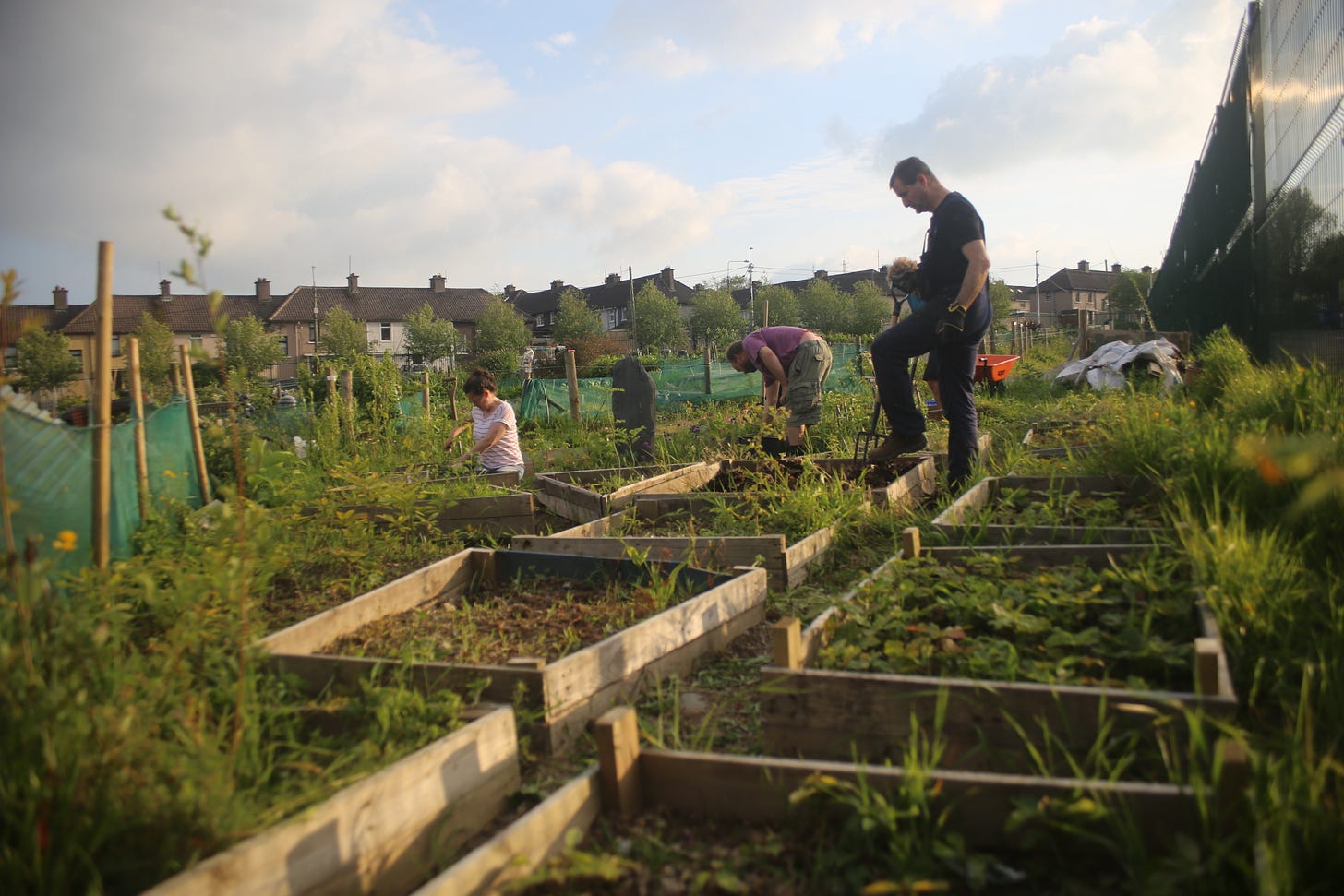
Luckily, Cork City Council has been very supportive of our efforts thus far and has granted us an allotment in Churchfield. This space is already full of saplings and this Winter we may need another space to move trees into, allowing them to grow hardy for planting out.
Many of our members have also started nurseries at home. They will also be looking for places to plant their young trees. We encourage members to reach out within their own communities and seek places to plant. From gardens to parks, road verges to open spaces that are typically mowed all summer, there are endless possibilities for more trees.
Not everywhere suits, of course. Factors such as proximity to buildings, underground services, overhead wires, busy roads and footpaths must all be considered.
We seek to co-ordinate with council officials in all our tree-planting endeavours and have set up an interactive map which people can use to suggest places that might be suitable: for now, this map needs permission to access, but I’ve put our contact details at the bottom of the article.
Supplying the council with locally grown saplings
We hope to have enough trees to offer the city for their own planting schemes in years to come, which would ensure that locally grown native species could become the norm for planting in new developments and along roadsides.
Traditional woodland management is not an ingrained aspect of the Irish psyche, but it has huge environmental benefits as it creates periodic clearances in which small shrubs and flowers thrive, alongside a stable canopy of larger forest habitat.
Relearning woodcraft skills
We have been deprived of our woods for so long that we need to relearn the skills of woodcraft. Luckily the skillset we need has survived in small pockets like the Irish National Forestry Foundation, GMIT Letterfrack and National Heritage Park Co Wexford.
Arts and crafts will thrive when access to cheap local timber is made possible and in the long term, this is an aspect of Trees Please I am particularly excited to see develop. But one thing at a time.
We are focused on planning for this Autumn's seed collections and are recording suitable sites with large, healthy parent trees that can provide the seed for what is to come.
If you’d like to learn more about planting trees and growing trees from seed, Northern Irish group The Conservation Volunteers has a species-by-species guide on everything from collecting seed to sowing to planting here.
And if you'd like to help us at Trees Please, join us by emailing treespleasecork@gmail.com or getting in touch on Facebook.

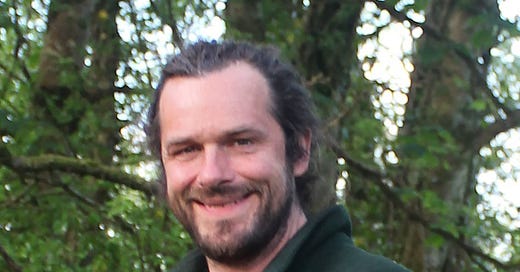


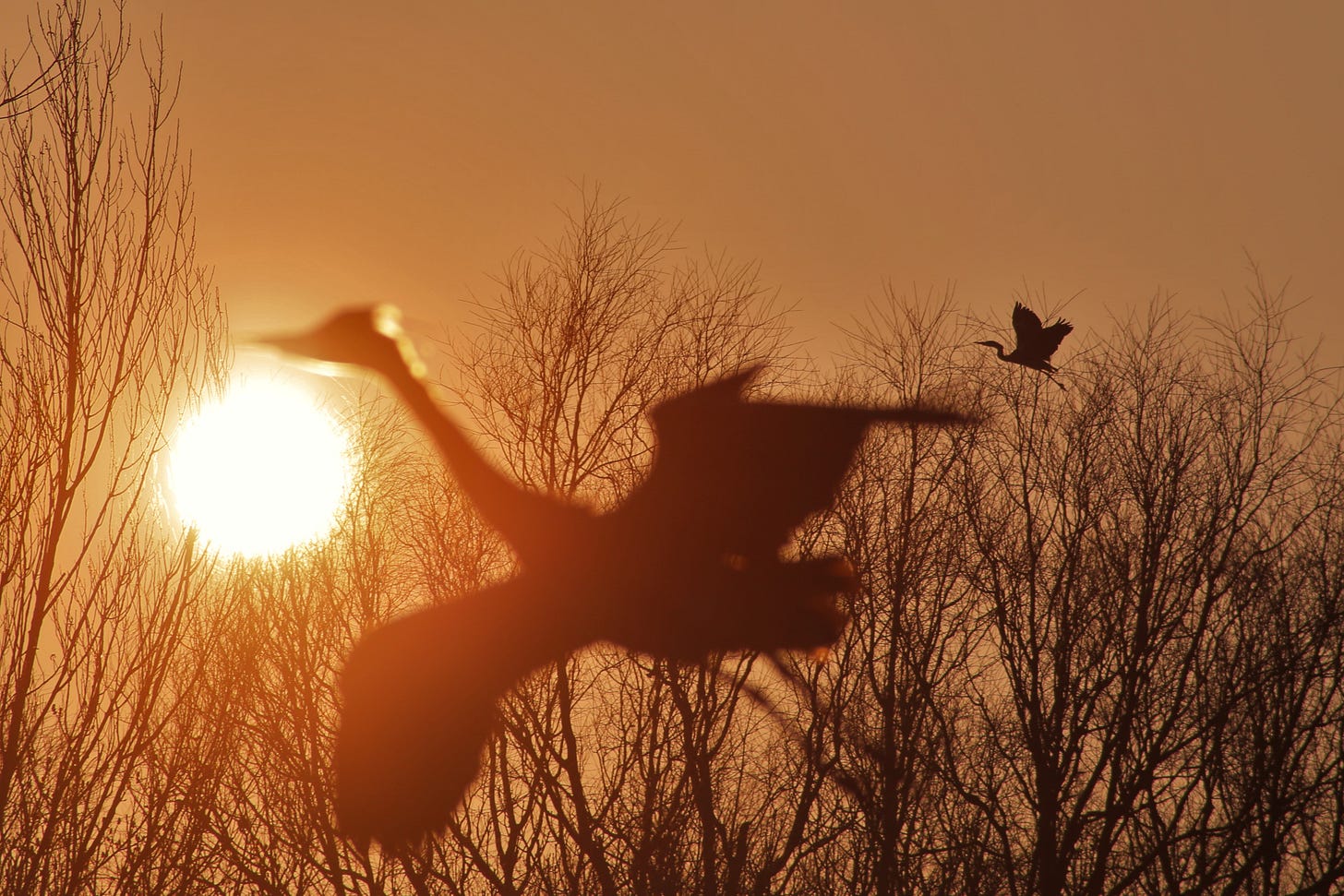
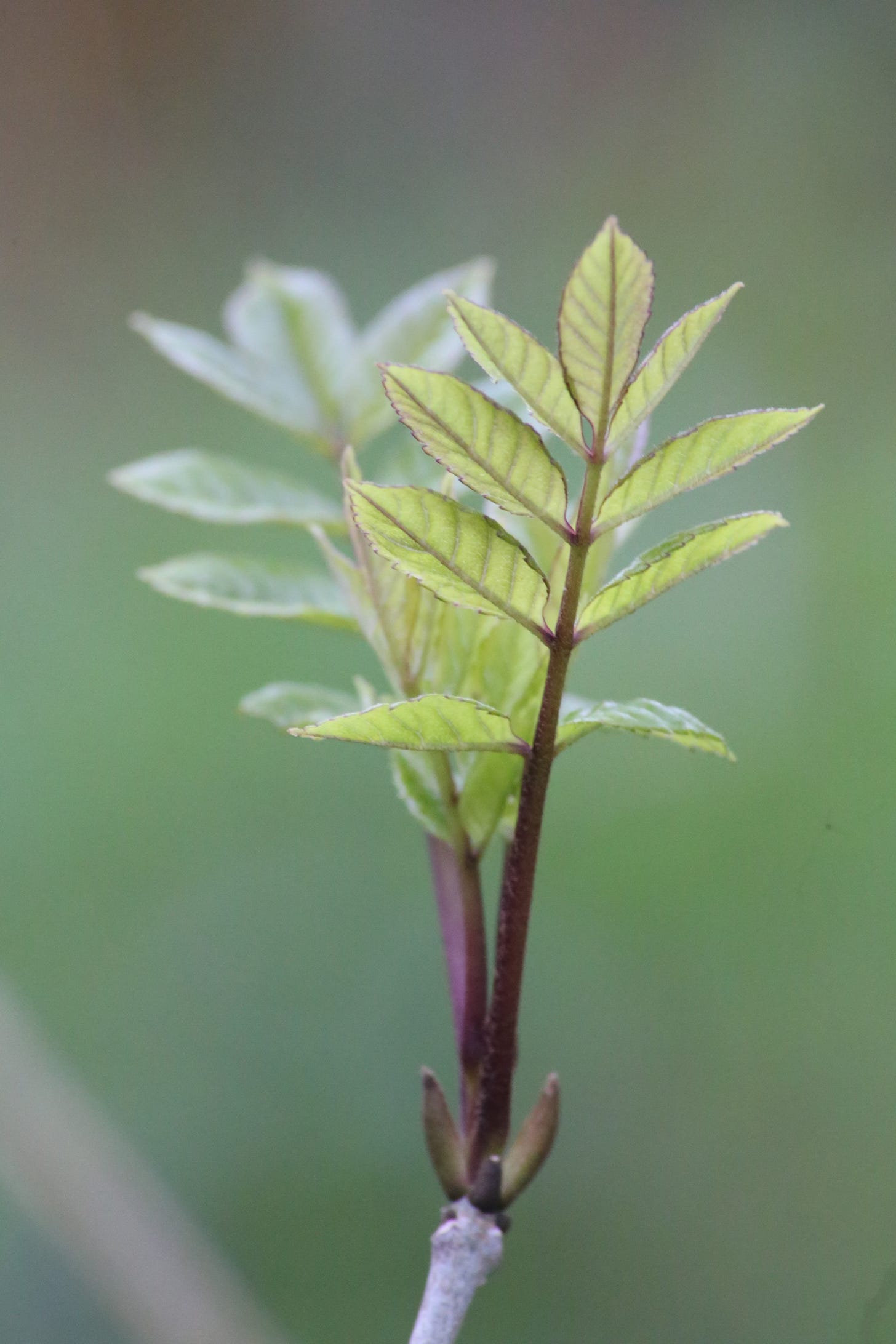
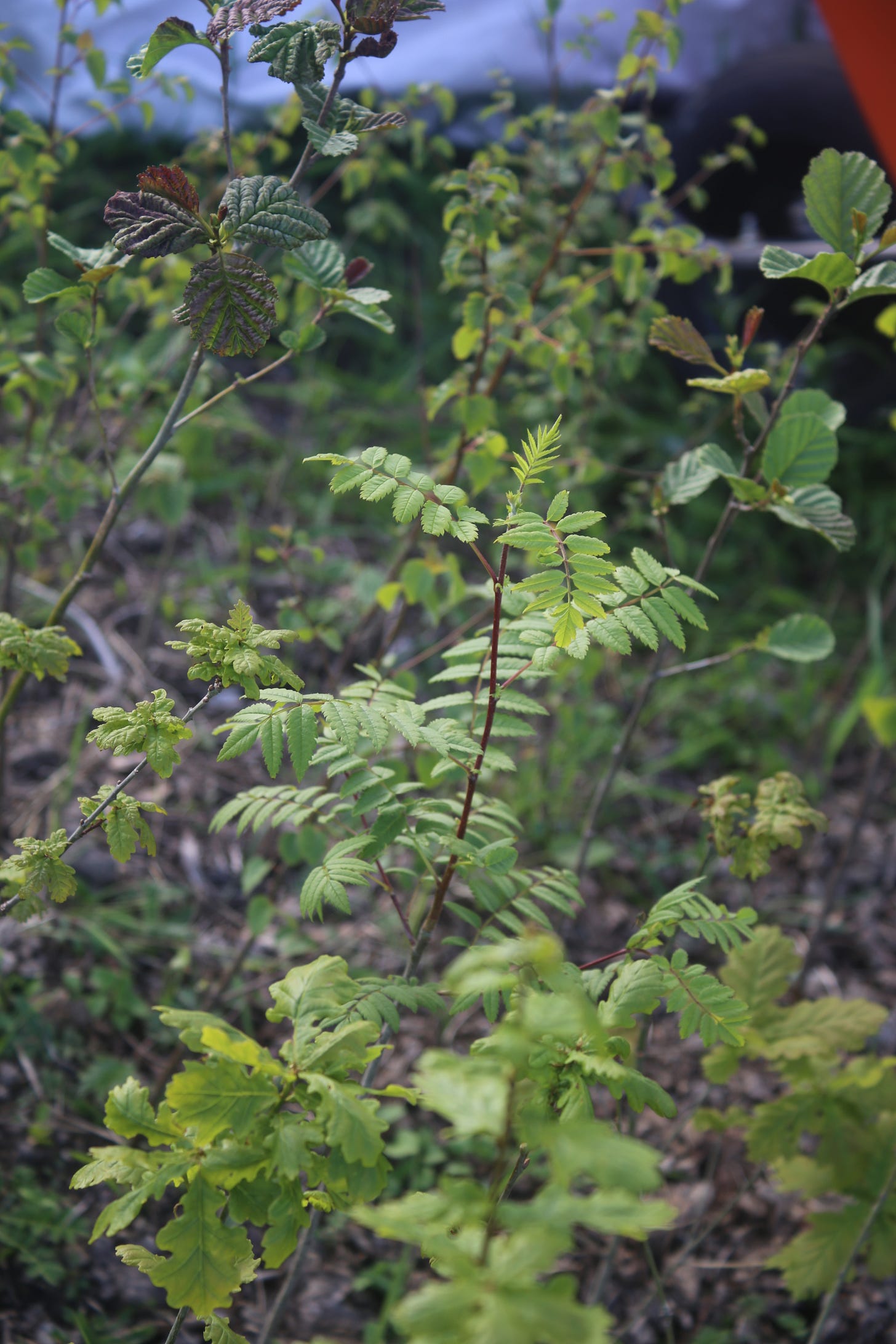
Ash trees are so good at self seeding there is no need (unless, dare i suggest, it's from a bulky bureaucratic convenience) to import them or indeed native hollies which I have seen peppered across the Cork and Kerry landscape this summer
Holly trees planted last year in the Glen Park display tags showing their origin in Holland - why?